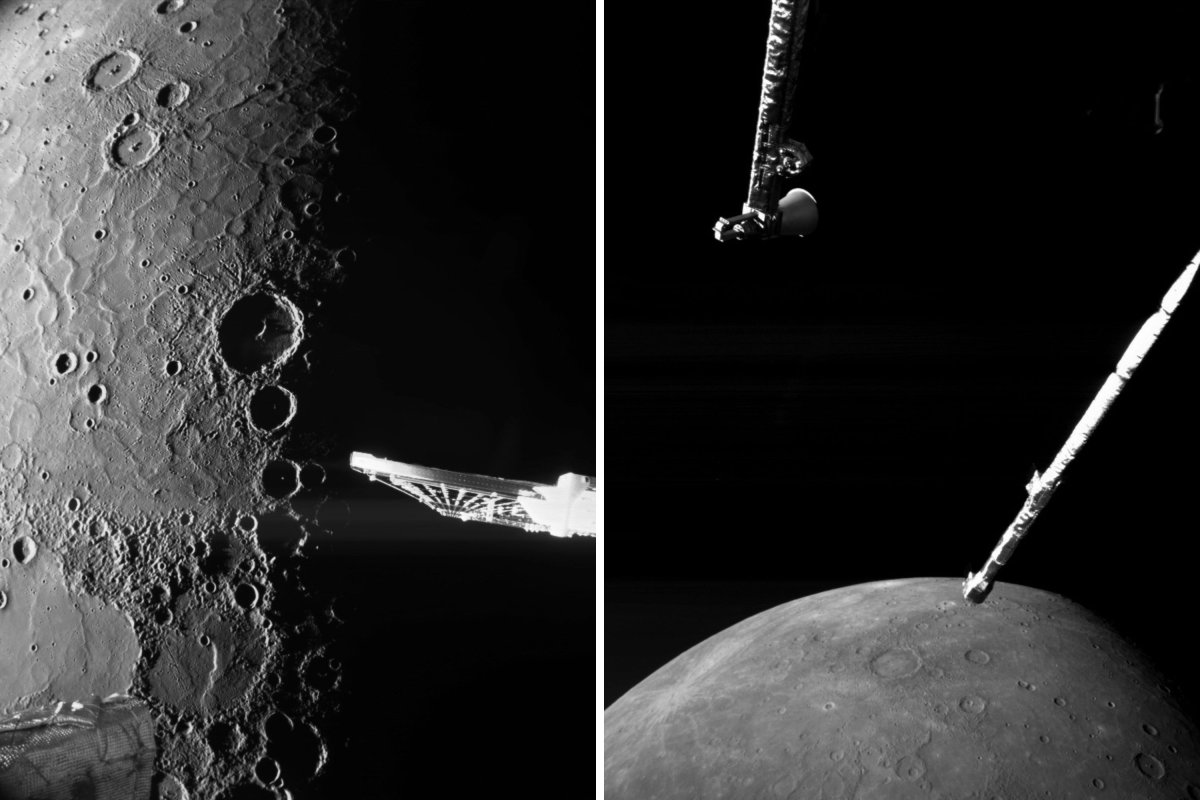A spacecraft has sent back some of the most detailed and breathtaking images of Mercury's north pole, shedding new light on the mysterious, shadowy regions of the small planet closest to the Sun.
In one of the most striking images, the spacecraft photographed the planet's largest impact crater, the Caloris Basin, which spans more than 930 miles in diameter.
Why it Matters
The Caloris Basin, created by a massive ancient collision, is one of the defining geological features of Mercury.
The European-Japanese BepiColombo spacecraft, which has been studying Mercury since its launch in 2018, flew just 183 miles above the planet's night side during its final flyby of the planet.
What is the BepiColombo?
On Thursday, the European Space Agency (ESA) released the stunning photographs, which provide a close-up look at Mercury's permanently shadowed craters—regions that never receive sunlight, offering a glimpse into the planet's icy and geologically rich past.
After passing through Mercury's shadow, BepiColombo's monitoring camera 1 (M-CAM 1) captured its first close-up views of the planet's surface.
Flying over the "terminator"—the boundary between day and night—the spacecraft gained a rare opportunity to peer directly into the permanently shadowed craters at the planet's north pole.

What to Know
The spacecraft's cameras also captured sweeping views of Mercury's volcanic plains, highlighting the planet's varied and dynamic surface.
The flyby, the sixth and final close approach for BepiColombo, is a critical step in the spacecraft's long journey toward its final destination.
The BepiColombo mission represents a significant scientific collaboration between Europe and Japan.
It is named after Giuseppe "Bepi" Colombo, an Italian mathematician and engineer whose groundbreaking work in the 1960s helped shape NASA's Mariner 10 mission, the first spacecraft to fly by Mercury.
Colombo's contributions to space exploration continued with his involvement in the Italian Space Agency's tethered satellite project, which flew aboard the U.S. Space Shuttle in the 1990s.
What Happens Now
With these latest close-up images, BepiColombo has not only provided a treasure trove of data for scientists but also expanded our understanding of Mercury, a planet that remains one of the most enigmatic in our solar system.
The spacecraft is on track to enter orbit around Mercury in late 2026, where it will study the planet from two orbiters: one developed by the European Space Agency and the other by the Japan Aerospace Exploration Agency (JAXA).
These orbiters will focus on mapping Mercury's surface, analyzing its magnetic field, and studying its polar regions in detail.
This article contains additional reporting from The Associated Press.




















 English (US) ·
English (US) ·